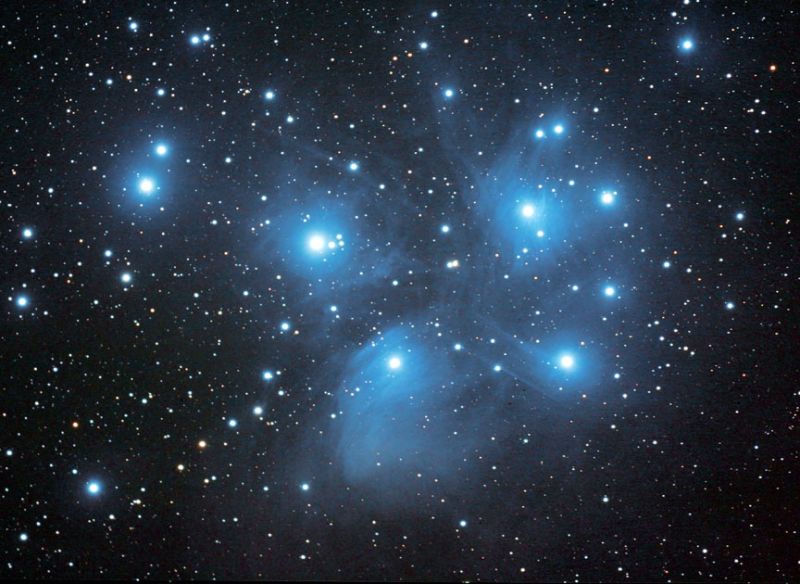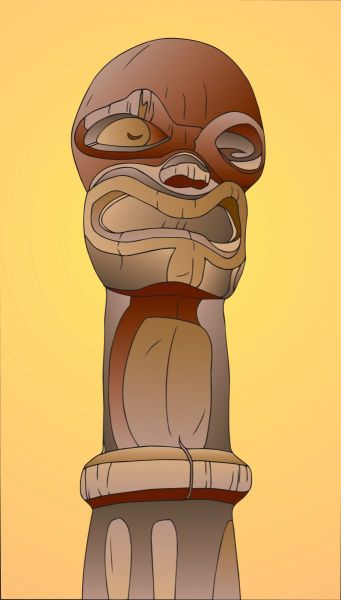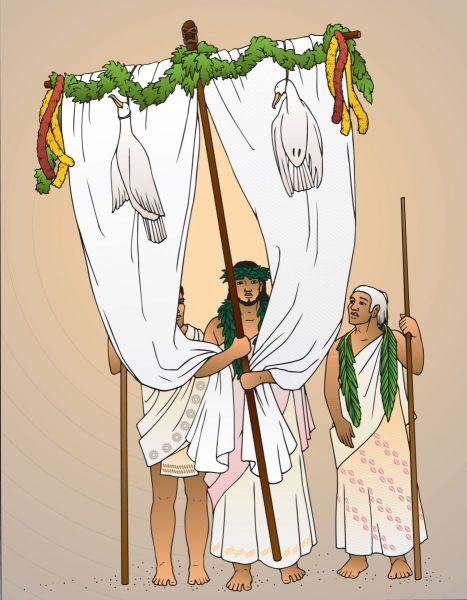Digital Collections
Celebrating the breadth and depth of Hawaiian knowledge. Amplifying Pacific voices of resiliency and hope. Recording the wisdom of past and present to help shape our future.
Ka‘ano‘i Walk
November 2013
Hauʻoli Makahiki Hou!
As the sun sets over the Koʻolau mountain range, all eyes eagerly gaze at the eastern horizon for the sign. The sky sluggishly dims and the celestial twinkle grows brighter. The billboard of the heavens reads "Makahiki is here."
The rising of Makaliʻi (the constellation Pleiades) at sunset marks the beginning of the Hawaiian new year, known as Makahiki. Makahiki usally begins mid-November and ends in late January or February, aligning with the rainy season. It is a time set aside for tribute, harvest, sport, and play.
The word makahiki can refer to a time of celebration, the ceremonies and activities observed during this particular time of year, or a complete calendar year. Traditionally for Hawaiians, our calendar year is divided into two seasons, Kau (the dry season) and Hoʻoilo (the wet season). The month of ʻIkuā, which means "noisy," usually begins in September or October. This month is characterized by roaring surf, thunderstorms, and rain. This boisterous personality of ʻIkuā signaled the approach of Makahiki.
The roughly four-month period of Makahiki was a time of peace and plenty, relaxation and games, and for harvest. It was also a time to honor the god Lono, one of the four major gods recognized not only here in Hawaiʻi, but throughout the Pacific. His domain includes fertility, agriculture, and peace. During Makahiki, the qualities of Lono were celebrated by feasting, competing in sport and games, hula and storytelling. War between the aliʻi was forbidden. Some of the games that were enjoyed are: heihei kūkini (racing), mokomoko (boxing), hākōkō (a wrestling style similar to sumo), pūhenehene (a skilled-game of deception), and kōnane (a board game most resembling chess).
Makahiki also signifies a time of rest and rejuvenation for both the land and the people. This period served as an opportunity to both fortify existing bonds and forge new relationships. With the holiday season fast approaching, we can all appreciate the necessity of setting aside time to regroup as a family and strengthen connections. Like we do with our own individual ʻohana, let us also take time to fortify our organizational relationships, as they are a big part in the success of fulfilling Pauahi’s vision.
ʻAuhau (taxes) and hoʻokupu (offering) were collected during Makahiki. Each ahupuaʻa gathered its ʻauhau to be given to the aliʻi nui (high chiefs) of the island. According to revered cultural resource Mary Kawena Pukui, the aliʻi nui acted as the deputy to Lono, who was represented by the akua loa. The akua loa is a long staff with a Lono carving at the peak and a cross-piece with pieces of pala fern, feather lei, and skins of the kaʻupu bird fastened near the top, from which also hung a square of white kapa (bark-cloth). The akua loa led the procession around the mokupuni (island). Offerings of food and other products were collected at the borders of the districts where Lono was also represented by a carved wooden head of a hog. Thus, the naming of district boundaries as ahupuaʻa, or "altar of the hog."
Yet Makahiki is more than just play and paying taxes. For most of us today, tax season represents everything but leisure. However, in the traditional context, it served as a period of reflection, recognition, and pride. Each land district strove to produce in abundance and give its very best products, such as the famous fine makaloa mats of Niʻihau. For our ʻohana here at Kamehameha Schools, one possible application of the valuable lessons we can glean from Makahiki, would be to always offer up our very best to students, colleagues, ʻohana, alumni, and the greater community—all to honor and thank our founder, Ke Aliʻi Pauahi.
In the early evening, as Makaliʻi rises in the Eastern sky, let us be aware of Makahiki and welcome with open hearts, the new year.


